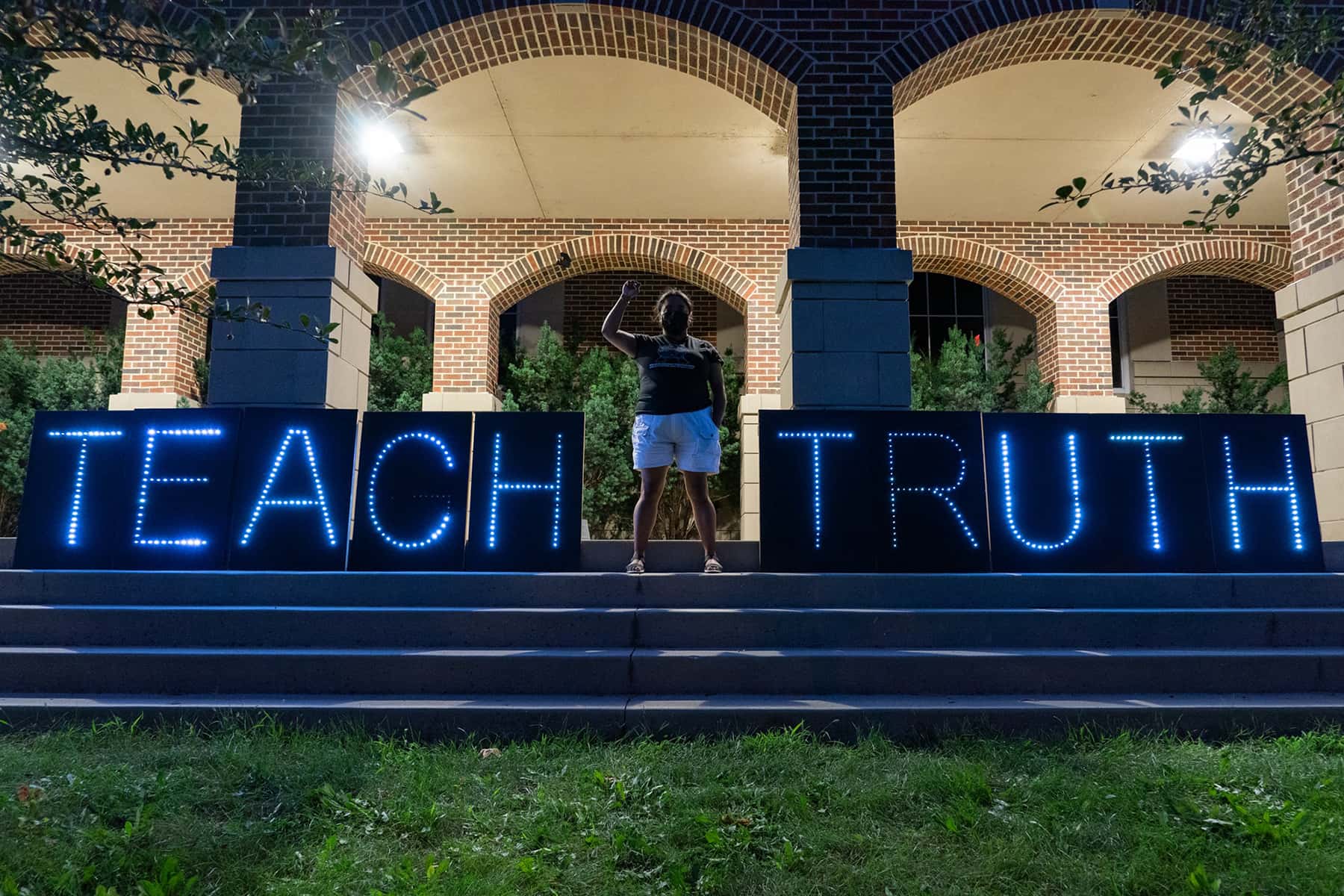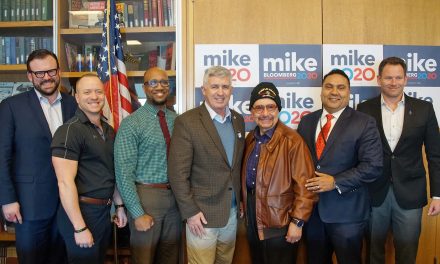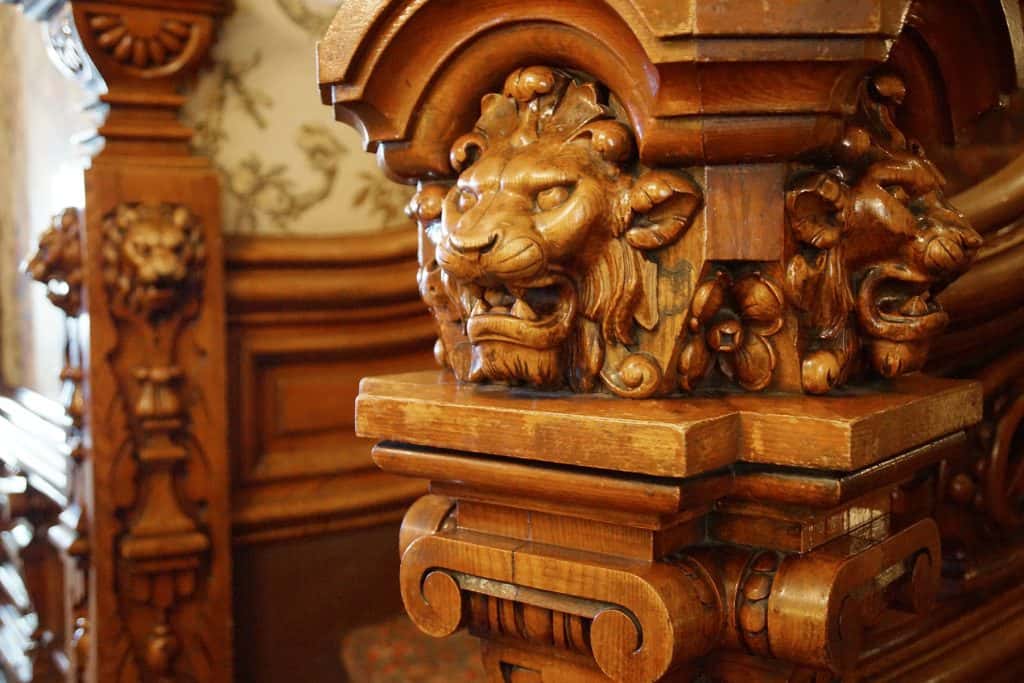
“White people go around, it seems to me, with a very carefully suppressed terror of Black people, a tremendous uneasiness. They don’t know what the Black face hides. They’re sure it’s hiding something. What it’s hiding is American history. What it’s hiding is what white people know they have done, and what they like doing. White people know very well one thing; it’s the only thing they have to know. They know this; everything else, they’ll say, is a lie. They know they would not like to be Black here. They know that, and they’re telling me lies. They’re telling me and my children nothing but lies.” – James Baldwin
I am often confronted with the fact that people in and around Milwaukee, particularly in the city’s suburbs and exurbs think they are experts on the condition of the Black community in the city. I hear indirectly that some residents in the burbs say Black people are, lazy criminals who don’t value education. These suburbanites often say they avoid the city because Black people are hazardous to their health. Keep in mind that this comes from people who have barely ever if ever, spent any appreciable amount of time in the Black community. I try to use an honest look at history to explain why they don’t known what they are talking about.
Many residents around Wisconsin consume all of the bad “news” about Black people and assume they know their views are right on the money. They hear from some Black people in the city about how horrible it is in the so-called “hood,” the “ghetto” or whatever silly term people use to describe where Black people live. I’ve lived in Milwaukee long enough to not be afraid of any neighborhood. I’ve spent enough time traveling around the city to places that people claim are horrible and what I see is not what many see. I see the hardworking people that are doing all they can to make a living, and the struggle to have something to value in their lives. These people are the huge majority of the Black community that we don’t shine a light on.
No one seems to like to hear good news about Black people in Milwaukee. There is an orgy of bad news daily. Treating us as simply victims of racism takes away our agency. It makes it appear that we don’t fight back. It makes us look like helpless people. Most of the Black community by far don’t fit the stereotypical image we see so often on the news, in the movies and tv shows Hollywood has us addicted to. Americans are addicted to “bad Black people” narratives in the same way some are addicted to drugs.
Milwaukee certainly has issues and large challenges. We are the poster child for practically every negative demographic indicator. We have one of the highest infant mortality rates, a high number of shootings and murders, one of the lowest Black homeownership rates, a high incarceration rate, a serious epidemic of reckless driving, the highest Black poverty rate etc, etc. All of these things are true but they only tell a very, very tiny part of the story of Black people in Milwaukee. Looking back at our history is instructive in battling against this misplaced narrative.
I have lived in Milwaukee for a majority of my life, moving here at the age of seven in 1973. I went to and graduated from Milwaukee Public Schools. I’m a longtime homeowner, married, and a business owner. I would be what most would describe as a success. That’s nothing to brag about. It’s a fact that I’ve been fortunate enough to avoid some of the pitfalls that many can’t seem to escape in Milwaukee. I grew up very poor. Despite this, I had an upbringing that provided me with great role models and an idea of what a close-knit community looks like as a child. I remember what Milwaukee used to be like because I experienced Milwaukee at its best. What changed to create the current version of Milwaukee is unknown by far too many people, including a lot of residents of Milwaukee. The things I will share are not an excuse for the current state of affairs in Milwaukee. Instead my intention is to paint a picture of what helped us to get where we are today.
“We are not makers of history. We are made by history.” – Rev. Dr. Martin Luther King Jr.
Milwaukee was once a mecca of opportunity for many. It brought immigrants from all over Europe and thousands of Blacks looking to escape the South, because it offered a chance to live a good life. Black people in Mississippi, Georgia, Arkansas, Alabama and other Southern states heard about Milwaukee, packed their bags and came to the city with high expectations.
The Bronzeville business district on Walnut Street, offered a taste of the good life. It was safe, prosperous and a place that had multiple role models that you could not help but see daily. In 1950 Black people in Milwaukee had the highest per capita business ownership rate for Black people in the country. Columbia Savings and Loan, unlike most other banks, offered loans to Black people to purchase homes and get a loan to start a business. The jazz clubs on Walnut St. led to the city being known as the “Harlem of the Midwest.”
Everything started to look up for Blacks in Milwaukee after the federal government created the Fair Employment Practices Committee (FEPC) in 1941, in an effort to put an end to racial discrimination in defense and government jobs. After WWII began, and many Milwaukee manufacturing plants retooled to make materials for the war effort, those jobs opened up to Blacks across the city. Unions that had kept Blacks out intentionally, stopped that practice. A.O. Smith became one of the pioneers and set an example by hiring large numbers of Black workers who over the course of time fought valiantly for promotions and equal pay with their White co-workers. Word of the job opportunities spread to friends and family members down South and the late stage of the Great Migration saw Milwaukee as the leader of the pact in Black population growth.
After the war ended Blacks continued to come into the city in larger and larger numbers. Access to family supporting wage manufacturing jobs led to a sudden, rapid increase in the black population in the city beginning in the 1940s. In 1940 there were 7,501 black residents. By 1970 the Black population exploded to 105,088. No other major city saw such a huge growth in its black population over that time period.
The Blacks who came to Milwaukee dealt with “Midwest Nice” racism. They had trouble accessing certain neighborhoods because of the use of racial covenants and unwelcoming White neighbors in the city and suburbs. That just made them work even harder to access what they wanted. Milwaukee’s Black community has a long history of being resilient and advocating for their own wellbeing. We are not pushovers and have always stood up for ourselves, despite what many want to believe about us.
The city leaders have done us a disservice by placing barriers in our way. Mayor Frank Zeidler, pushed for urban renewal and freeway construction which were both very detrimental to the small Black population of the city. The promise of urban renewal was “slum removal,” and rebuilt homes, but we got what Blacks called “Negro removal” and disinvestment instead.
The Hillside urban renewal project which began in 1957 destroyed the business district on Walnut Street before the interstate got there, contrary to what many will tell you. Over 300 families were displaced (98% of them Black) and about half of the Black owned businesses in the city were bulldozed out of existence. The Roosevelt urban renewal project, on the northern edge of the Hillside urban renewal project, displaced another 29 families (93% of them Black).
The North-South Freeway, known now as Interstate 43 (I-43) destroyed what was left of that area. The Park East Freeway displaced about 400 Black families, the Park West freeway displaced 1,500 families although it was never built and I-43 construction destroyed over 8,000 homes. Of the 14,000 plus homes bulldozed to make room for the freeways in Milwaukee, more than half were occupied by Black people at a time when they were less than 9 percent of the city’s residents.
Looking at mortgages in Milwaukee in 1940 shows how hard the 7,501 Black residents had becoming homeowners. Of the 27,565 mortgaged homes in the city just 67 were held by non-whites (0.2%). On the state level the numbers were similar (99.7% were held by Whites, 0.18% were held by Blacks.) Of the 45,576 mortgage properties that were owner occupied in Wisconsin in 1940 just 80 were owned by Blacks.
Lender discrimination in 1950 continued to leave Blacks on the outside looking in when it came to homeownership. Their were a total of 35,331 mortgages held by Whites in 1950 in the city of Milwaukee and just 369 were held by non-whites. All of the 5,076 Federal Housing Administration (FHA) loans in Milwaukee were held by Whites as well as all 3,028 of the Veterans Administration (VA) loans in the city. Those doors were not only closed but were nailed shut for Blacks and Mexicans who were attempting to live the American dream in Milwaukee.
This discrimination was occurring around the country. There were over 9 million homes with a mortgage in the country in 1950. Eighty-eight percent were owner occupied. Over $44 billion in outstanding mortgage debt was held by banks, savings and loans and other lenders. Over two out of every three of these mortgaged homes was a single family property with an average mortgage debt of $4,100 ($45,293 in 2021 dollars adjusted for inflation).
The FHA held 14 percent of these loans and the VA held another 13 percent in 1950. Most FHA loans had interests rates of 4-4.5% (max allowed under law for FHA loans). Almost all of the VA loans were 4% interest. For conventional loans on owner occupied homes, (35% were at 6% interest, 33% were at 5% interest, 12% were at 4.5% interest, and 9% were at 4% interest).
These very affordable terms allowed homeownership to skyrocket in the years after WWII ended. Two-thirds of mortgages held in 1950 were on homes purchased from 1946-1950. The median purchase prices were $6,000 for conventional bank loans, $8,000 on FHA loans, and $7,600 on VA loans. Two and a half million WWII veterans held some type of mortgage in 1950 while another 500,000 were held by WWI veterans. Just over 1.2 million properties were guaranteed by the VA. For those WWII veterans, more than half had either a VA or FHA first mortgage (38% VA, 20% FHA).
Veterans of color were mostly shutout from getting the government and conventional bank loans. They’re much more dependent on conventional loans than their White peers. For Whites overall 68 percent of them had conventional loans but 83 percent of people of color had those loans. The FHA and VA both gave significantly larger numbers of loans to Whites than they did to people of color. Just 4 percent of all the home loans in the country were held by non-whites in 1950.
The homes purchased by whites in 1950 were much newer than those that people of color acquired. The median purchase price was $6,300 for Whites and $3,300 for non-whites.
Across the country Whites held 98.8 percent of all home loans, leaving just 1.2 percent for people of color. Whites had 97.8 percent of all FHA loans, 97.6 percent of VA loans and 95 percent of conventional loans. Non-whites held just 267,000 home loans while Whites had 6,132,000 home loans. By 1950, the FHA had given just 24,000 loans to people of color while providing 1,056,000 to Whites across the country and the VA had only given only 22,000 loans to people of color and 902,000 to Whites.
These trends continued into 1960 and beyond. Home mortgages jumped from about 9.4 million in 1950 to 15.8 million in 1960. FHA loans increased from 1.3 million in 1950 to 2.7 million in 1960. VA loans similarly increased, from 1.2 million in 1950 to 3.5 million in 1960. Conventional lenders had issued 5.9 million mortgages in 1950 but 9.6 million ten years later. The gaps across race stayed nearly identical in 1960 to what they were in 1950, and by far a majority of the 6.4 million new loans by 1960 were given to White borrowers. From 1930 until 1960 over 98 percent of all home loans were given to Whites only.
Homeownership, combined with access to free GI Bill education, and VA business loans created the large White middle class we see today. Whites have seen their homes appreciate at a much higher rate than Blacks have. Homes when this rush to buy occurred were much more affordable, with the average mortgage debt of $3,300 being less than the yearly median family income of $3,900 in 1950. The equity Whites acquired while people of color in Milwaukee were shutout of purchasing homes is still part of their family wealth today. Almost every Black person in Milwaukee had to go to Black owned Columbia Savings & Loan to purchase a home or business.
Another obstacle to be overcome by Blacks in the city were segregated schools. As the number of Black children was growing rapidly on the North side Milwaukee Public Schools (MPS) built schools mostly in White neighborhoods on the South side. The school board discriminated by having so-called “neighborhood schools” and instituting “intact busing” for Black students. This busing, required Black students and their Black teachers to be shipped to unwelcoming schools and classrooms on the south side of the city.
They were then kept mostly away from their White peers, not sharing classrooms, recess or lunch. In many instances, the Black students were bused back to their neighborhood schools for lunch and then bused back to their south side school for the remainder of the school day, necessitating them having a shorter school day than White students had access to. Attorney Lloyd Barbee filed a lawsuit challenging segregated schools in Milwaukee in 1965. It was not until 1976 when MPS was told to fix the problem.
None of the plans they came up with have ever worked. Today most White children in the city attend private schools or use open enrollment to attend suburban schools. Only 9.9 percent of students in MPS are White, while Whites represent about 36 percent of city residents. Since the Chapter 220 program, created by the state in 1975 to integrate schools, was ended by the state a few years ago, most suburban school districts have seen a significant decrease in Black students.
The single most prosperous time for blacks in Milwaukee was in 1970. The Black median family income at that time was the seventh highest for Blacks in the country. The Black unemployment rate was extremely low and the Black poverty rate was significantly lower than the national average for blacks.
Unfortunately, the jobs that drove the Black population growth were beginning to disappear, and just over ten years later the bottom fell out of the job market in Milwaukee when the 1981-82 recession hit. To give some perspective on what that change was and its impact on the Black community a look at the economic condition of Milwaukee in 1970 tells an important story.
In 1970, 77.8 percent of all males sixteen and older were in the labor force in Milwaukee. Thirty-five percent of those jobs were in manufacturing. This is the breakdown of labor force participation by men among age groups: 20-21 74.9%, 22-24 87%, 25-34 95.2%, 35-44 95.7%, 45-64 89.5%. Over 76,000 men worked in manufacturing jobs in the city. These high paying jobs provided a median family income of $10,262 ($74,446 in 2021 dollars) and the average family income was $10,889 ($78,994 in 2021 dollars) in 1969. Only 5.9% of families in the city lived in poverty in 1970.
There were 26,850 black males sixteen and older in the city. Of this group 20,738 were in the labor force (77.2%) while some of this age cohort were still in school. Only 1,721 of this cohort were unemployed. The labor force participation rate among blacks by age groups were as follows: 20-21 78.7%, 22-24 88.7%, 25-34 94.5%, 35-44 92.8%, 45-64 82.2%. Black men were working in good jobs and supporting their families in a similar fashion to their White peers.
As a result of these family supporting wage jobs, the Black median family income in 1969 was $7,491 ($54,343 in 2021 dollars) and the average Black family income was $8,086 ($58,660 in 2021 dollars). Blacks making the decision to come to Milwaukee to work paid great dividends for Black people for almost 40 years. These jobs were widely available and kept the Black community safe and comfortable. Blacks had a much higher rate of working in these jobs than White men did. Across the state 46.9 percent of Black males worked in manufacturing while only 35.4 percent of White males did.
The changes in the condition of the Black community took place because the jobs that brought Black people to the city went away. Between 1968 and 1975 at least 76 companies employing 16,000 people shut down. One of the largest employers in the city, Allis-Chalmers went from 20,000 employees in 1948 down to 3,700 in 1980. By 1999 they would join other large employers by closing, taking away the 11,500 jobs they supplied in 1970. AC Electronics closed in 1999 also. Preceding them were Schiltz Brewing (1982), American Motors (1988), Pabst Brewing (1996), Briggs & Stratton went from 7,400 jobs in 1970 to only 510 by 2017. A.O. Smith turned in to Tower Automotive in 1997 being bought out and closed their doors in 2006 after employing over 8,000 in 1970. Harnischfeger employed 4,450 in 1970 but as Japanese owned Komatsu only employed 900 in 2016. Miller Brewing went form having nearly 2,400 people making beer in 1970 to just 630 working in the plant by 2016. Overall, the city went from 133,051 manufacturing jobs in 1947, down to only 27,126 by 2017.
Making less money made it exceptionally difficult to pay mortgages. Many who lived the American dream in Milwaukee saw it turn into a nightmare. Homes were foreclosed on before building significant equity. Because home values in the White community and suburbs continue to grow, these issues did not have the same devastating impact on White families in the city and suburbs.
Along with lending discrimination, and predatory lending, the Black community is in a very difficult place. We can see the impact of historical and contemporary housing discrimination issues in Milwaukee today by looking at current housing values. Nationally the average Black home is valued at $245,000 versus $318,000 for White homes. In Milwaukee the average Black home is only worth $115,000, ($130,000 less) than the national average for Black homes. By contrast, White homes in Milwaukee are worth $296,300, just ($21,700 less) than the national average for White homes.
For those looking to sell homes nationally, the average price paid by Whites is $206,000 but just $162,000 for Blacks, a gap of $44,000. In Milwaukee the average purchase price gap is $112,350 (White $206,000, Black $90,550). The penalty for being a Black selling your home in Milwaukee compared to your peers nationwide is getting 2.6 times less value than your White peers.
The gap in equity in homes is a vestige of decades of discrimination which continues to this day. The median value of equity in a White home nationally is $125,000 but just $72,900 for a home owned by a Black person. This is part of the reason the median net wealth of Whites is $171,700 and only $9,567 for Blacks. The huge gap in homeownership rates is the main factor in this disparity.
The Urban Institute reported in 2018 that:
“In 1960, there was a 27-point gap between black homeownership (38 percent) and white homeownership (65 percent). Today, the gap is even wider…”
The national homeownership rate for Blacks hit a record low since the Federal Fair Housing Act was passed in 1968 when it dipped to just 40.7 percent in the second quarter of 2019. By contrast 76 percent of Whites nationally in the second quarter of 2020 owned their homes.
Metro Milwaukee has one of the lowest Black homeownership rates in the country. Only Minneapolis-St Paul metro area has a bigger gap between Blacks and Whites (White 67.3%, Black 25.2%). In Metro Milwaukee, 70 percent of Whites are homeowners and just 27.4 percent of Blacks are. The Black homeownership rate is 42.3 percent in Detroit, 40.2 percent in Chicago and St. Louis, and 45.9 percent in Baltimore and Memphis.
NBC News reported in August 2020 that:
“Nationally, the 29-point gap between Black and white homeownership rates in the second quarter of 2020 was greater than it was in 1940.”
A continuation of wage stagnation is worsening for Blacks in Milwaukee where over 61 percent of all Balck Wisconsinites live. In 1970 the White median family income in the state was $66,821 in 2021 dollars, and the black median family income was $49,761 in 2021 dollars. Black families in Wisconsin at that time made 74.4 percent of what White families made. Today those numbers look much different. White median family income today in Wisconsin is $69,457 and Black median family income is $33,860 which means blacks make only 48.7% of what White families make today.
The White median family income in Wisconsin as adjusted for inflation means Whites make $2,636 more today than in 1970. For Black families, they make the equivalent of $15,901 less than they made in 1970. Black wages have decreased drastically in the state since 1970. Black families in Wisconsin make just 68 percent of what they earned in 1970.
This history explains why Milwaukee looks the way it looks today. When well-paying jobs disappear, and people are excluded from home and business ownership and the wealth building that comes from those activities, everything changes for the worse. People in the Black community did not get lazy. The jobs that we depended on went away.
In 1970 more than half of Black men in Milwaukee worked in blue collar jobs while just 15 percent of White men did. The job losses were much more impactful for Blacks in the city. Over 51,000 of those jobs have left Milwaukee since 1982. The economic crisis that the Black community suffers from did not come about because of anything they did. The business community and all governments let us down by divesting in the central city.
Those family supporting wage jobs have been replaced by mostly service sector jobs. The federal minimum wage has been stuck at $7.25 since 2009. If nothing is done about increasing the wages paid to Blacks and other Milwaukeeans, we will continue to be a city in crisis. The Black community is the most vulnerable by far. A significant number of Blacks left the city over the last ten years for greener pastures in the South and Southwest. This trend will continue if nothing changes.
“We can deny our heritage and our history, but we cannot escape responsibility for the result.” – Edward R. Murrow
© Photo
Joe Brusky














